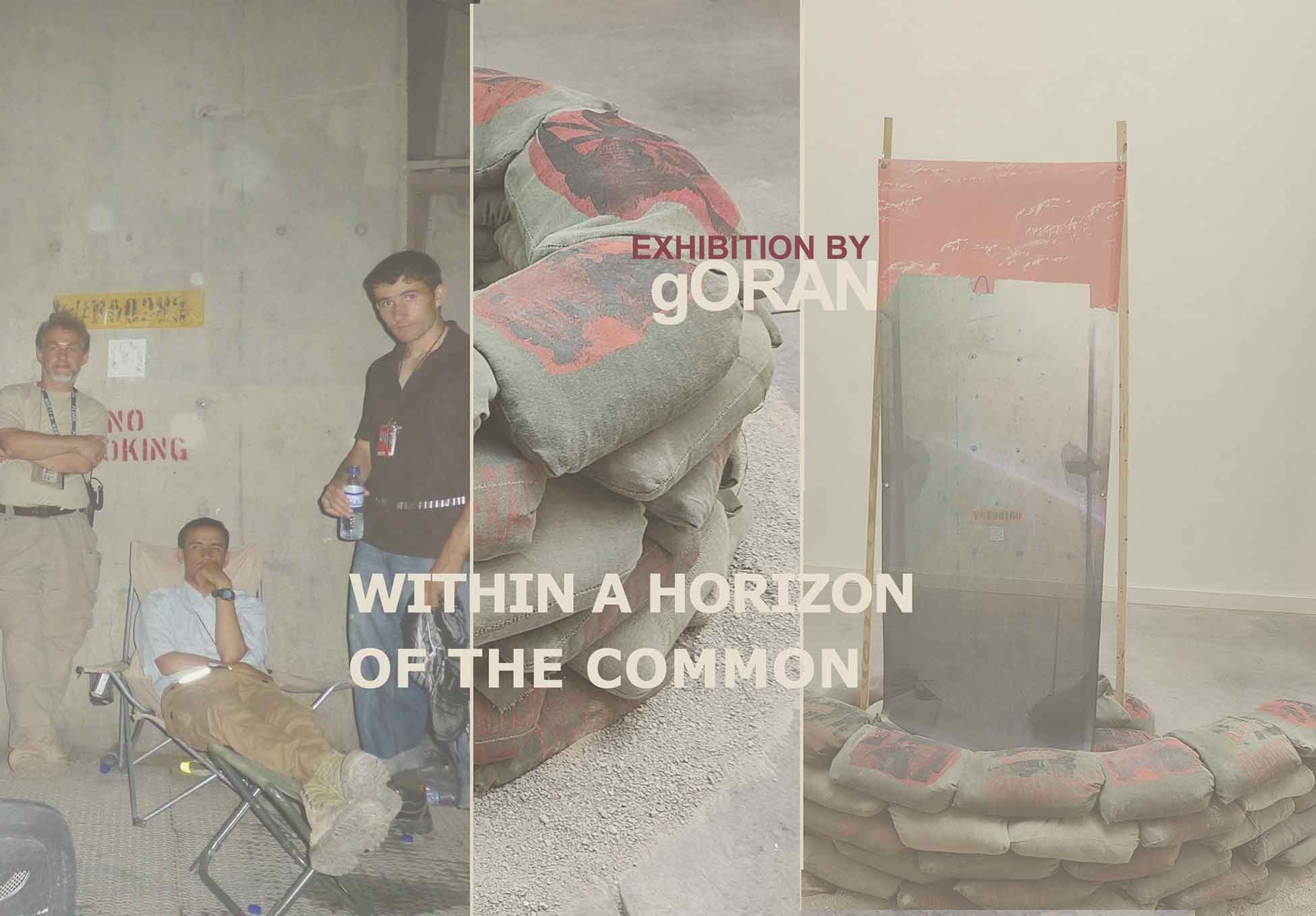

The exhibition ‘Within Horizon of the Common’ through multifaceted statements reveals the hope of the individuals engulfed in wartime destitutions. Utilizing an anthropological approach to photojournalism, I show hope in the faces and situations among the manual laborers with whom I worked alongside at US military bases in Afghanistan.
White walls in galleries as a normative parameter during peaceful times are destroyed. During a war, the other type of parameters matters i.e., concrete T-Walls, and or sandbags walls. Therefore, a number of sandbag constructed sculptural embodiments, sandbag walls, will carry silkscreen printed images of people’s faces and situations that will be standing on top of sandbag bunker walls much framed photographs would be hung upon white walls during peaceful times.
The exhibition involves large photographic prints, affixed to the walls give atmospheric context with corresponding content. They are there as a parallel world coexisting side by side with cold sandbags and concrete T-Walls, with printed images of people who try to make in this world of gamble, a simple one, to be or not… Fragility yet endurance of the human body and its spirit in the face of destruction caused by wars have been addressed and explored through juxtaposing the human body backgrounded by concrete T-Wall. With this I am asking what is stronger, the concrete or flesh, the air pressure of an exploded rocket or human spirit.
The soulless industrially printed images of concrete T-Walls, bunkers and sandbags on mash banners are referents to the cold nature of senseless mass-produced walls that surround contemporary US military bases throughout Afghanistan. Yet isn’t a concrete architectural structure one of the most prevalent structures in the domain of our everyday surroundings, here, at home, in the USA.
This exhibition, regardless of its initial appearance of a bleak and dark description of any military postsin war environment, speaks of the hope I found in the everyday spirit of resilience among individuals engulfed in wartime destitutions. Through photography, and installations, I show this hope in the faces and situations among the manual laborers with whom I worked alongside at US military bases in Afghanistan. It is right there, in within ordinary humane, friendly everyday interactions we simply take for granted, and as such brush it away that I have found as a solution.
‘Within a Horizon of the Common’ at The Lillian Bradshaw Gallery, Dallas Central Library


















